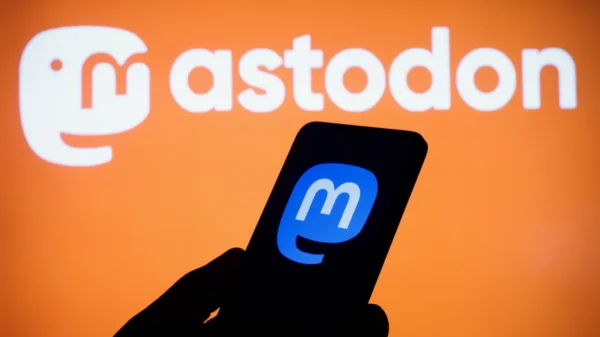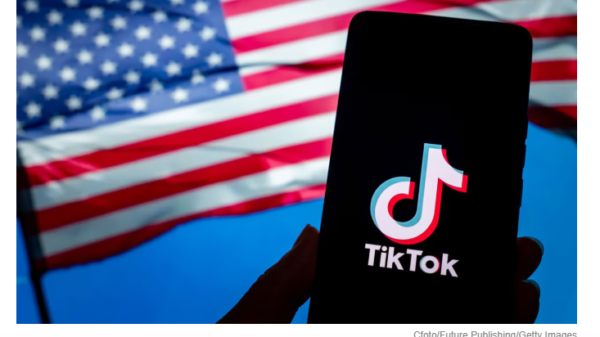Explore how intersecting identities impact the experiences of women in tech and discuss the need for inclusive policies and practices.
KEY TAKEAWAYS
- Embracing intersectionality in the tech industry is crucial for fostering diversity and inclusion.
- Intersectionality helps address the unique challenges and experiences faced by individuals with multiple identities, such as race, gender, and sexuality, in the tech field.
- By recognizing and valuing intersectional perspectives, the tech industry can drive innovation, improve decision-making, and create a more equitable and welcoming environment for all.
Intersectionality in the tech industry is a topic of utmost importance in today’s rapidly evolving world. As the digital landscape continues to shape our lives, it is essential to explore the concept of intersectionality and its impact on the tech sector. Intersectionality, a term coined by legal scholar Kimberlé Crenshaw, recognizes that individuals possess multiple intersecting identities that shape their experiences and levels of privilege or marginalization.
In the realm of technology, the implications of intersectionality are profound. The tech industry is known for its lack of diversity and inclusion, with underrepresentation of women, people of color, LGBTQ+ individuals, and other marginalized groups. Understanding and addressing the multifaceted challenges faced by these intersecting identities are crucial for fostering innovation, equality, and social progress within the tech sector.
This article will delve into the intricate world of intersectionality in the tech industry. You’ll examine how various forms of discrimination, bias, and unequal opportunities affect individuals from different backgrounds. Moreover, you’ll explore real-world scenarios that shed light on the obstacles faced by marginalized groups in tech. By raising awareness and promoting inclusive practices, society can work towards building a tech industry that values and celebrates the diverse voices and experiences that intersectionality encompasses.

Photo: Kimberlé Crenshaw\ American Council on Education
Background
To understand the significance of intersectionality in the tech industry, it is essential to grasp the definition of intersectionality and recognize the importance of diversity and inclusion within this sector.
Definition of Intersectionality
Intersectionality, a concept introduced by Kimberlé Crenshaw, is a framework that acknowledges the interconnected nature of multiple social identities and how they intersect to shape an individual’s experiences. These identities can include gender, race, ethnicity, sexual orientation, socioeconomic status, disability, and more. Intersectionality recognizes that individuals do not experience oppression or privilege solely based on a single identity, but rather through the convergence of various aspects of their identity.

Photo: Kateryna Babaieva
Importance of Diversity and Inclusion in the Tech Industry
Diversity and inclusion are crucial factors in fostering innovation, driving economic growth, and ensuring fair opportunities for all within the tech industry. It is widely recognized that a diverse workforce brings a range of perspectives, experiences, and talents, leading to more creative problem-solving and improved decision-making processes.
- Promoting Innovation
Embracing intersectionality in the tech industry enables the development of products and services that cater to a broader range of users. Diverse teams can offer unique insights and ideas, leading to the creation of technology that better addresses the needs and preferences of diverse communities.
Enhancing Problem-Solving: When teams comprise individuals from diverse backgrounds, they can tap into a wider array of perspectives, enabling them to tackle complex challenges with more creativity and effectiveness. Diverse teams bring different life experiences, cultural knowledge, and problem-solving approaches, leading to more robust and inclusive solutions.
- Expanding Market Reach
The tech industry serves a global audience with diverse backgrounds and needs. By embracing intersectionality, companies can effectively engage with a wider customer base, establish stronger connections with diverse communities, and gain a competitive edge in the market.
- Social Responsibility
The tech industry holds immense influence and impact on society. Embracing diversity and inclusion is not only a moral imperative but also a responsibility to address historical inequalities and create a more equitable and just society. Fostering an inclusive environment can allow the tech industry to challenge biases, dismantle systemic barriers, and pave the way for social progress.
Understanding Intersectionality in Tech
To fully comprehend the implications of intersectionality in the tech industry, it is essential to delve into the theory of intersectionality, examine its application within the tech sector, and explore the challenges faced by marginalized groups in this context.
Explaining Intersectionality Theory
Intersectionality theory recognizes that individuals possess multiple intersecting identities that interact and influence their experiences and opportunities. It acknowledges that a person’s experience of discrimination or privilege is not solely based on a single identity but is shaped by the convergence of various aspects of their identity, such as race, gender, sexual orientation, and socioeconomic status. This framework highlights the interconnectedness of different forms of oppression and the unique challenges faced by individuals with intersecting identities.
Intersectionality in the Context of the Tech Industry
The tech industry, known for its lack of diversity and inclusion, is greatly impacted by intersectionality. Marginalized groups, including women, people of color, LGBTQ+ individuals, and individuals with disabilities, often face compounded barriers to entry and advancement in tech careers. The intersectional identities of individuals shape their experiences within the industry, influencing their access to opportunities, representation, and resources.
Within tech companies, the lack of intersectional perspectives can lead to biased decision-making processes, limited innovation, and the development of products and services that do not cater to the needs of diverse user bases. It is crucial to recognize and address the unique challenges faced by individuals at the intersections of multiple identities to build a more inclusive and equitable tech industry.
Challenges Faced by Marginalized Groups in Tech
Underrepresentation: Marginalized groups often face underrepresentation in tech roles, leading to a lack of diverse perspectives and ideas in the industry. Gender and racial disparities are particularly prominent, with women and people of color being significantly underrepresented in technical and leadership positions.
- Bias in Hiring and Promotion
Discrimination and bias can influence hiring and promotion decisions, perpetuating the underrepresentation of marginalized groups. Unconscious biases, such as gender or racial biases, can result in qualified individuals being overlooked or undervalued in the recruitment process.
- Unequal Opportunities for Career Advancement
Marginalized individuals often encounter barriers when it comes to career advancement and leadership opportunities. Limited access to mentorship, sponsorship, and networking opportunities can hinder their professional growth and limit their ability to reach higher-level positions.
- Hostile Work Environments
Tech workplaces may perpetuate hostile environments for individuals with intersecting identities. Microaggressions, stereotypes, and exclusionary practices can create an unwelcoming atmosphere, resulting in decreased job satisfaction and hindering the retention of diverse talent.
Addressing these challenges requires proactive efforts to promote diversity, equity, and inclusion within the tech industry. By recognizing the unique experiences and barriers faced by marginalized groups at the intersection of multiple identities, companies can create a more inclusive and supportive environment that embraces the richness of diverse perspectives.

Photo: Andrea Piacquadio
Real-World Scenarios
Examining real-world scenarios helps shed light on the tangible impact of intersectionality within the tech industry. This section explores specific situations where intersectionality intersects with gender and racial bias in hiring practices, unequal opportunities for career advancement, and workplace culture and inclusion.
Gender and Racial Bias in Hiring Practices
- Examples of Gender and Racial Disparities in Tech Recruitment
- Women and people of color often face systemic barriers in tech recruitment processes. Research has shown that job postings and interview processes may inadvertently favor male candidates, perpetuating gender bias.
- Studies have revealed that tech companies tend to have lower representation of women and underrepresented racial groups, indicating biases in recruitment strategies and hiring decisions.
- Impact of Biases on Underrepresented Groups
- The biases present in tech hiring have significant consequences for underrepresented groups. Women and minorities may be discouraged from applying to positions or face discriminatory treatment during the selection process, limiting their opportunities to enter or advance in the industry.
- These biases reinforce the lack of diversity within tech companies, hindering innovation and perpetuating a homogeneous workforce.
Unequal Opportunities for Career Advancement
- Lack of Mentorship and Sponsorship for Marginalized Individuals
- Marginalized individuals often encounter limited access to mentorship and sponsorship opportunities in the tech industry. This lack of support and guidance can impede their professional growth and hinder their advancement into leadership roles.
- Without strong networks and advocates, underrepresented individuals face additional barriers in navigating the complex landscape of career development in tech.
- Glass Ceiling Effects on Women and Minorities
- The presence of glass ceilings, invisible barriers that prevent certain groups from reaching top-level positions, is prevalent in the tech industry. Women and minorities frequently find themselves facing limited opportunities for career progression, despite their qualifications and expertise.
- The glass ceiling effects contribute to the underrepresentation of women and minorities in leadership roles and perpetuate the lack of diverse perspectives at decision-making levels.
Workplace Culture and Inclusion
- Microaggressions and Stereotyping
- Microaggressions, subtle everyday acts of discrimination, are pervasive in the tech industry. Underrepresented individuals often experience stereotyping, invalidation of their skills and experiences, and biases that undermine their contributions.
- These microaggressions create a hostile work environment, erode self-confidence, and hinder the overall well-being and productivity of marginalized individuals.
- Exclusionary Practices and Their Consequences
- Tech workplaces may exhibit exclusionary practices that contribute to a lack of inclusion. Exclusive social networks, lack of representation in decision-making processes, and unequal access to resources create barriers for marginalized groups.
- The consequences of exclusionary practices include diminished job satisfaction, decreased retention rates, and the loss of valuable talent within the tech industry.
Promoting Intersectionality and Diversity in Tech
To address the challenges posed by intersectionality in the tech industry, concerted efforts must be made to promote intersectionality and foster diversity within the sector. This section explores strategies and initiatives aimed at creating a more inclusive tech industry.
Recognizing Bias and Taking Responsibility
- Recognizing Bias
Tech companies must acknowledge and confront their biases. This involves understanding the impact of unconscious biases on hiring, promotions, and decision-making processes. By recognizing biases, companies can take the necessary steps to mitigate their effects.
- Taking Responsibility
Tech companies must assume responsibility for fostering a diverse and inclusive environment. This involves actively challenging discriminatory practices, fostering a culture of accountability, and aligning diversity and inclusion efforts with organizational values and goals.
Implementing Inclusive Hiring Practices
- Expanding Outreach
Tech companies can reach out to diverse communities and organizations to broaden their talent pool. Proactive outreach efforts help attract a wider range of applicants and create opportunities for underrepresented individuals.
- Blind Hiring
Implementing blind hiring practices can help reduce unconscious biases. Removing identifying information such as names, gender, and ethnic backgrounds from resumes or conducting skill-based assessments can ensure fair evaluation of candidates based on qualifications and abilities.

Photo: Andrea Piacquadio
Providing Equal Opportunities for Career Growth
- Mentorship and Sponsorship Programs
Establishing mentorship and sponsorship programs can provide marginalized individuals with the guidance and support necessary for career growth. Pairing them with mentors and sponsors who can provide insights, advocate for their advancement, and offer career advice is instrumental in fostering equal opportunities.
- Professional Development and Training
Offering targeted professional development programs and training opportunities can empower underrepresented individuals to acquire new skills and advance in their careers. Accessible training resources and support for skill enhancement help bridge the opportunity gap.
Creating Supportive and Inclusive Work Environments
- Diversity and Inclusion Initiatives
Tech companies should develop comprehensive diversity and inclusion initiatives that encompass policies, practices, and resources to cultivate an inclusive work environment. This includes establishing clear guidelines against discrimination and fostering a culture of respect and acceptance.
- Employee Resource Groups
Employee resource groups can provide a platform for marginalized individuals to connect, support one another, and advocate for their needs within the organization. These groups contribute to a sense of belonging and help shape inclusive company policies and practices.
Supporting and Amplifying Marginalized Voices in Tech
- Representation in Leadership
Encouraging diversity in leadership roles is crucial for fostering an inclusive tech industry. Actively promoting individuals with intersecting identities to leadership positions ensure diverse perspectives are represented at decision-making levels.
- Amplifying Marginalized Voices
Tech companies should actively seek out and amplify the voices of marginalized individuals within the industry. This can be achieved through speaking opportunities, conferences, panels, and media features, providing platforms for underrepresented voices to be heard and valued.
Final Thoughts
Intersectionality plays a pivotal role in shaping the experiences and opportunities of individuals within the tech industry. The tech sector, with its lack of diversity and inclusion, must recognize the significance of intersectionality and take proactive measures to address the challenges faced by marginalized groups.
By promoting intersectionality and diversity in tech, companies can foster a more inclusive and equitable industry. This requires recognizing biases, implementing inclusive hiring practices, providing equal opportunities for career growth, creating supportive work environments, and amplifying marginalized voices.
Embracing intersectionality not only benefits individuals but also enhances the tech industry as a whole. Diverse perspectives lead to increased innovation, creativity, and the development of products and services that cater to the needs of diverse user bases. Tech companies must understand the importance of intersectionality and actively work towards dismantling systemic barriers that hinder the progress and representation of marginalized groups.
Championing intersectionality and diversity can help the tech industry become a more inclusive and progressive space where everyone’s voices are heard, valued, and celebrated. That’s how society can build a tech industry that reflects the true essence of intersectionality and thrives on the power of diversity.
















































